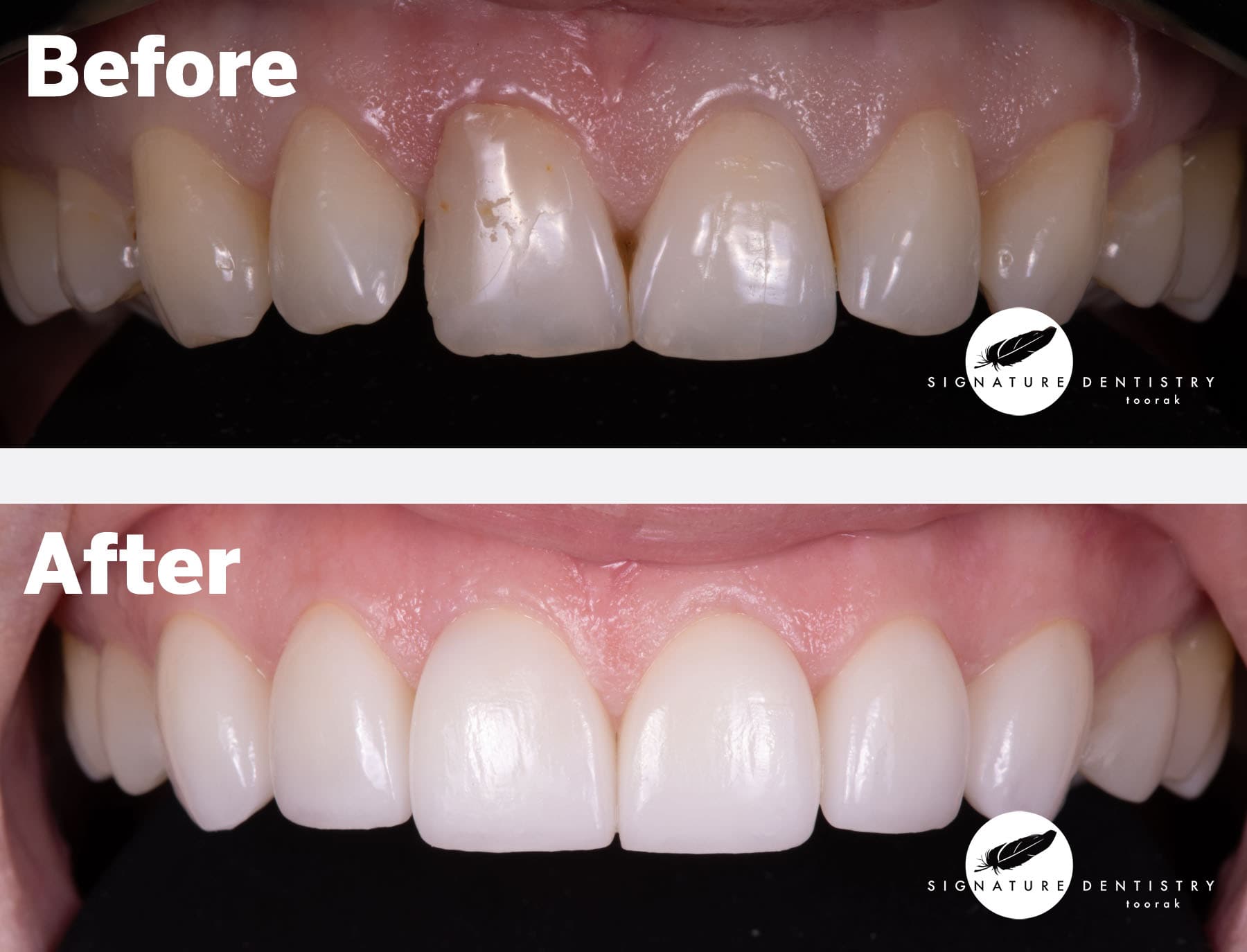Exploring the world of veneers and their transformative potential has become a focal point in modern cosmetic dentistry. As more individuals seek to enhance their smiles and dental well-being, understanding the intricacies of veneer application, potential pitfalls, and the journey to achieving stunning results is crucial. This article delves into the comprehensive guide on addressing subpar veneers and turning them into long-lasting, beautiful solutions.
In today's era of cosmetic dentistry, many individuals turn to veneers as a reliable option for addressing dental imperfections. However, not every veneer application delivers flawless outcomes. Sometimes, poorly executed veneers or insufficient planning can lead to undesirable results. This is where stories of "bad veneers before and after" transformation become invaluable, offering insights into overcoming challenges and achieving success in cosmetic dentistry.
This article serves as your ultimate guide to navigating the path from imperfect veneers to radiant smiles. With expert advice, real-world examples, and practical tips, it empowers both patients and dental professionals to make informed decisions and achieve the desired outcomes.
Read also:Prince Harry Opens Up About Sleepless Nights As A New Dad
Comprehending Veneers: What They Truly Represent
Veneers are meticulously crafted, ultra-thin shells designed to cover the visible front surfaces of teeth. Typically fabricated from porcelain or composite resin, these shells are tailored to enhance the appearance of teeth. They address cosmetic concerns such as discoloration, chips, gaps, and misalignment, while also offering restorative benefits by providing structural support to weakened teeth.
Varieties of Veneers
There are two primary types of veneers:
- Porcelain veneers: Renowned for their longevity and lifelike appearance, porcelain veneers remain the most sought-after choice in cosmetic dentistry.
- Composite veneers: While more budget-friendly, these veneers may not endure as long as their porcelain counterparts. They are ideal for minor cosmetic adjustments.
Common Challenges with Substandard Veneers
Although veneers are generally successful in enhancing smiles, some patients encounter issues stemming from improper placement, subpar material quality, or inadequate preparation. These problems often result in dissatisfaction, necessitating revisions or replacements.
Indicators of Subpar Veneers
Below are some telltale signs that may suggest you have poorly executed veneers:
- Irregular alignment or spacing
- Chipping or cracking
- Inconsistent color matching with adjacent teeth
- Excessive thickness or bulkiness
- Pain or discomfort while biting or chewing
Real-Life Transformations: Bad Veneers Before and After
Visual representations of bad veneers before and after corrective procedures offer profound insights into the transformation journey. Numerous dental practices and professionals share these before-and-after images to showcase the effectiveness of their corrective treatments.
Case Study: Restoring Confidence Through Veneer Overhauls
In one compelling case, a patient arrived with poorly placed veneers that not only caused physical discomfort but also diminished their self-assurance. After a thorough evaluation, the dentist proposed a comprehensive revamp of the veneers. Post-procedure, the patient experienced a remarkable improvement in both functionality and aesthetics, regaining their confidence.
Read also:Kevin Nealons Journey From Comedy To Fatherhood
Root Causes of Subpar Veneers
The origins of flawed veneers can be attributed to several factors, including:
- Inexperienced or inadequately qualified dentists
- Utilization of inferior materials
- Inadequate preparation of the teeth
- Poor communication between the dentist and the patient
Recognizing these underlying causes enables patients to make more judicious choices when selecting a dentist and planning their veneer treatments.
Solutions for Improving Substandard Veneers
If you find yourself dealing with suboptimal veneers, there are several viable options for correction:
Option 1: Replacing the Veneers
In numerous instances, replacing existing veneers with new ones proves to be the most effective solution. This entails removing the old veneers and preparing the teeth for the installation of new ones. A seasoned cosmetic dentist ensures the new veneers are perfectly aligned, color-coordinated, and fully functional.
Option 2: Repairing Damaged Veneers
Minor imperfections, such as chips or cracks, can often be repaired without replacing the entire veneer. Composite resin serves as an economical and efficient method for restoring the damaged areas.
Choosing the Ideal Dentist for Your Needs
Picking the right dentist is paramount in achieving outstanding results with veneers. Seek a dentist with a proven track record in cosmetic dentistry, boasting a portfolio of successful veneer cases. Consulting reviews and seeking recommendations can significantly aid in making an informed choice.
Vital Questions to Pose to Your Dentist
- How many veneer procedures have you successfully completed?
- Could you share examples of your previous work?
- What materials do you typically use for veneers?
- What steps do you take to ensure a precise fit and alignment?
Economic Considerations
The cost of veneers can fluctuate substantially based on factors such as geographic location, dentist expertise, and material preferences. On average, porcelain veneers can range from $900 to $2,500 per tooth, whereas composite veneers may cost between $250 and $1,500 per tooth. Bear in mind that addressing flawed veneers might involve additional expenses, so discussing pricing openly with your dentist is advisable.
Insurance and Coverage Options
Typically, most dental insurance plans exclude coverage for purely cosmetic procedures like veneers. However, if veneers are required for restorative purposes, partial coverage might be available. It's prudent to verify with your insurance provider to explore your coverage options.
Prolonging the Lifespan of Your Veneers
Maintaining your veneers through proper care is essential for their longevity. Follow these guidelines to preserve the quality of your veneers:
- Adopt a consistent regimen of brushing and flossing
- Avoid habits such as biting hard objects
- Schedule routine dental check-ups
- Utilize a nightguard if you suffer from teeth grinding
Conclusion: Elevate Your Smile with Confidence
The narratives of bad veneers before and after transformation underscore the significance of meticulous planning, execution, and upkeep in cosmetic dentistry. By comprehending the causes of flawed veneers and the remedies available, you can make well-informed decisions regarding your dental care. Whether you're contemplating veneers for the first time or seeking to rectify existing issues, collaborating with a skilled and experienced dentist is fundamental to achieving exceptional results.
We invite you to share your thoughts and experiences in the comments section below. Your feedback can prove invaluable to others embarking on a similar journey toward smile transformation. Additionally, feel free to explore other articles on our site for further insights into dental health and cosmetic procedures.
Table of Contents
- Comprehending Veneers: What They Truly Represent
- Common Challenges with Substandard Veneers
- Real-Life Transformations: Bad Veneers Before and After
- Root Causes of Subpar Veneers
- Solutions for Improving Substandard Veneers
- Choosing the Ideal Dentist for Your Needs
- Economic Considerations
- Prolonging the Lifespan of Your Veneers
- Conclusion: Elevate Your Smile with Confidence

